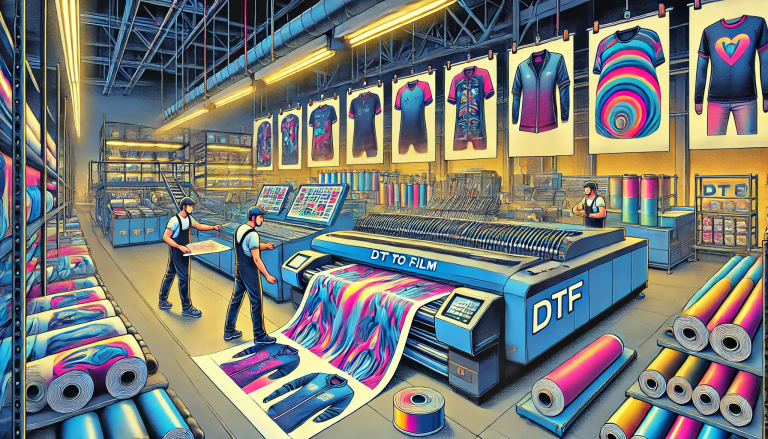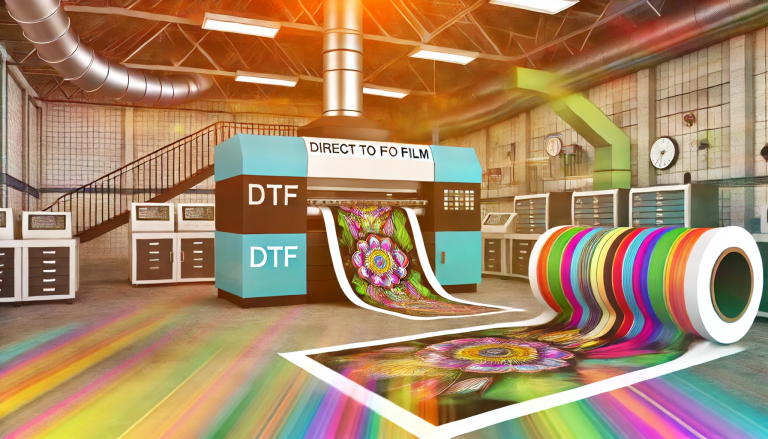“Exploring the World of UV DTF Film and Powder: A Comprehensive Insight” -MAXDTF- UV DTF transfer Film Supplier, UV DTF Film Manufacturer, Made in China
Direct to Film (DTF) printing technology is a relatively recent innovation that has created a significant impact in the printing industry. In particular, the advent of UV DTF film and powder has revolutionized printing processes. This blog post will guide you through the understanding of UV DTF film and powder, their applications, advantages, printing process, and an exploration of their transformative influence on the printing industry.
1. Understanding UV DTF Film and Powder
UV DTF (Ultraviolet Direct to Film) involves the use of specially designed films and powders that respond to UV light. In the printing industry, UV DTF film is a heat transfer film that, combined with UV DTF powder, enables vibrant, durable printing on a wide variety of surfaces.
The UV DTF powder is an adhesive powder that activates when exposed to UV light. This powdered adhesive binds the ink to the film and, subsequently, the printed design to the target material, ensuring its durability and quality.
2. Applications of UV DTF Film and Powder
UV DTF film and powder have found a broad range of applications due to their versatility. They are particularly beneficial in the textile industry, where they allow high-resolution printing on fabrics, including cotton, nylon, polyester, and blends thereof. This technology is ideal for producing detailed designs on t-shirts, hoodies, hats, and other apparel.
Besides textiles, UV DTF technology can also be utilized on non-textile surfaces such as wood, metal, ceramic, and certain types of plastic. This has expanded its usability into industries such as signage, merchandise, and promotional items.
3. Advantages of UV DTF Film and Powder
UV DTF technology offers several compelling advantages. Firstly, it enables full-color printing with excellent detail and vibrant colors. The UV curing process ensures that the prints are resistant to fading, even under harsh conditions, enhancing the durability of the printed items.
Secondly, DTF printing eliminates the need for pre-treatment of materials, simplifying the printing process and saving time. It also allows for the printing of complex designs on various surfaces, providing an efficient solution for personalized or small batch printing jobs.
Thirdly, the DTF process is eco-friendly. The UV DTF inks are water-based and free from harmful substances. Additionally, the process involves minimal waste, as the exact amount of ink and powder needed can be used, reducing both environmental impact and operational costs.
4. The UV DTF Printing Process
The UV DTF printing process begins with the creation of a digital design. This design is printed onto the UV DTF film using a specialized printer that uses UV DTF inks. The printed film is then coated with the UV DTF powder and passed under a UV light source, which cures the powder and binds it to the ink.
The final step is the heat transfer process. The printed film is placed on the target material, and heat is applied. This melts the powdered adhesive, allowing the design to transfer to the material. Once cooled, the film is peeled off, leaving the design on the material.
5. Transformative Influence of UV DTF Film and Powder
The introduction of UV DTF film and powder technology has been a game-changer in the printing industry. It has enabled the industry to overcome many of the limitations of traditional printing methods, such as the inability to print on certain materials or the difficulty of printing complex designs.
This technology has also provided businesses with a cost-effective, efficient, and environmentally friendly method to produce personalized products, promotional items, and custom apparel. Consequently, it has driven growth in industries such as fashion, advertising, and retail.
In conclusion, the world of UV DTF film and powder is a fascinating one, offering unlimited potential for creativity and innovation in the printing industry. As the technology continues to evolve, we can expect even more exciting developments and applications in the future.




